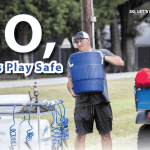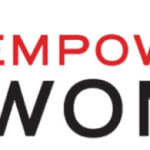Can’t squat because of tight hips?
If your hips feel “tight” when you try to squat and you’ve tried every stretch you can think of but nothing helps, it could be any number of things. A few different things that could be preventing you from squatting is that one, your stance is too narrow and a wider stance with more external rotation will allow you to clear a natural anatomical bony block as you get to 90 degrees or below. Two, you could have capsular tightness preventing you from being able to do a full squat or three, you may have a combination of adaptive shortening and weakness in the muscles that cross the joint, core and lower back. Today we will focus on one simple fix.
This blog post will concentrate on capsular tightness and an easy exercise “fix”. First, the athlete and or athletic trainer should evaluate hip external rotation seen in the first two pictures. You can see the left hip is much tighter than the right as the foot cannot be moved closer to the waist. The left hip is the one to address. Please note that an internal rotation restriction brings in other issues that may need to be addressed by a physician. This external rotation restriction is often coupled with a flexion restriction and can be easily visualized watching young athletes squat. The hips stop descending and the athlete starts bending forward at the waist giving them the illusion of getting deeper on their squat, which is something that makes me cringe when I think about the harm it can do to their back.
So here is the “quick fix”. They can be taught self-mobilization of the left hip. This involves the use of a thera band and a step-up box or sturdy bench. You want the line of pull to be behind the athlete by securing the thera band to something immovable. In the picture (although you can’t see) it’s attached to the squat rack. The athlete must slip into the band and bring it up into the groin crease high in the hip. The athlete will use a box so that when the foot is up on the box, the thigh is hip level or slightly higher (the picture is a little too high). The athlete should lunge forward and turn the knee out (externally rotating at the hip) as seen in the picture. It is important that the foot does not rotate out or come up off the box remaining flat. My model was not as good as I’d like as you can see the ankle starting to invert at the end of his motion. Very important for the foot to remain flat as the athlete would if he was squatting. I like to use an adapted version of Aaron Mattes’ active isolated stretching technique. The athlete would move into a position where they feel a pull, distraction at the hip and hold for a count of two. The athlete should do smooth repetitions going into the distraction and out for a set of 6 to 10 reps. The athlete should find that he/she can work further into the lunge and rotation as they work through the reps. The athlete can do this as a warm-up prior to squatting and should attempt light full movement after the exercise to reinforce that movement. If done consistently, the structures will adapt to the change improving the athlete’s squatting motion.
If you find restricted passive external rotation with an athlete, this exercise will help with squatting and other athletic movements.
Blog Information from: Ed Doherty MS, ATC – Pickens County High School








